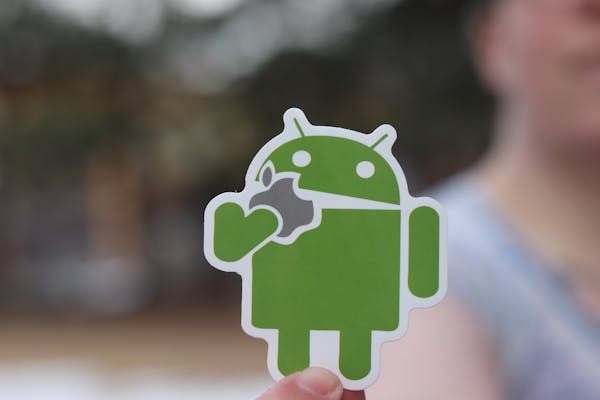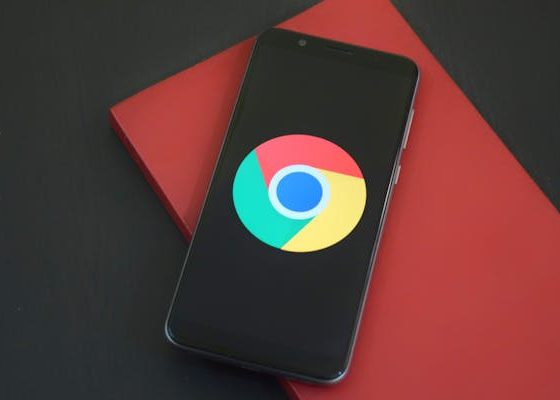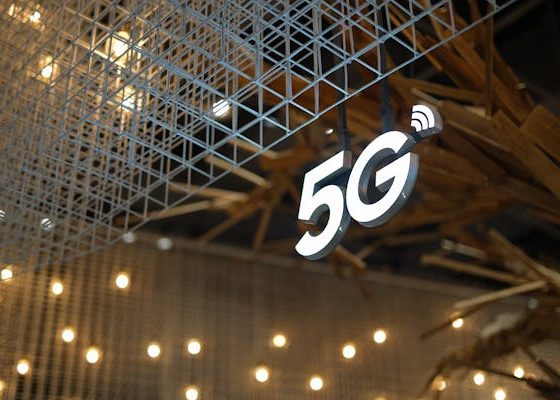
Which is Better Android or iOS?
The debate over which mobile operating system is superior—Android or iOS—has been ongoing since both platforms gained popularity. Each system has its fervent supporters and distinct features that appeal to different types of users. This article delves deep into various aspects of both Android and iOS to determine which is better Android or iOS.
History of Android
1. Customization and Flexibility
Android: The King of Customization
One of the biggest selling points of Android is its high degree of customization. Users can alter the look and feel of their devices extensively, thanks to a myriad of widgets, launchers, and themes available on the Google Play Store. Android also allows users to change default apps, giving them the flexibility to choose their preferred browser, messaging app, or media player. This flexibility extends to the system level, with Android offering options to tweak almost every aspect of the user experience.
iOS: Streamlined but Limited
In contrast, iOS offers a more streamlined and cohesive user experience. Apple’s operating system is designed to work seamlessly across all its devices, ensuring a consistent look and feel. However, this consistency comes at the cost of customization. iOS users have fewer options to change the appearance or behavior of their devices, with only limited ability to rearrange icons, use widgets, and change default apps.
2. App Ecosystem
Android: A Broad and Diverse Selection
The Google Play Store hosts a vast number of apps, often more than the Apple App Store. Android’s open nature allows developers to experiment and offer a wide variety of apps. This openness sometimes results in less polished apps, but it also means users have a broader selection of free apps and innovative tools that might not make it past Apple’s stringent approval process.
iOS: Quality and Security
Apple’s App Store, while smaller, is known for its quality and security. Every app undergoes a rigorous review process, ensuring that it meets Apple’s high standards for privacy and performance. iOS users often enjoy early access to new apps and features, as developers typically prioritize iOS for its profitability and user engagement metrics. This focus on quality often results in a smoother and more reliable app experience.
3. User Experience and Interface Design
Android: Variety and Choice
Android’s user interface can vary significantly between different devices, as manufacturers like Samsung, OnePlus, and Google put their unique spins on the system. This variety allows users to choose a device and interface that best suits their preferences. Android’s interface is generally user-friendly, but the diversity can lead to inconsistencies and a steeper learning curve for some users.
iOS: Consistency and Intuitiveness
Apple’s iOS is lauded for its intuitive design and consistent user experience across all devices. The interface is simple and easy to navigate, making it particularly user-friendly for those who are not tech-savvy. The consistent design language across apps and devices contributes to a cohesive and polished experience that is often more accessible to new users.
4. Hardware Integration and Performance
Android: Diversity and Innovation
Android is available on a wide range of devices from various manufacturers, offering consumers a plethora of choices in terms of design, performance, and price. This diversity fosters innovation, with manufacturers like Samsung pushing the boundaries with foldable screens and cutting-edge cameras. However, this variation can also lead to fragmentation, where not all devices receive timely updates or have the same level of performance.
iOS: Seamless Integration and Optimization
Apple’s control over both hardware and software allows for seamless integration and optimization. iOS is specifically designed to work with Apple’s hardware, resulting in a smooth and efficient performance. Features like Handoff, Continuity, and AirDrop highlight the benefits of this tight integration, enabling users to switch between devices effortlessly. This control also ensures that all devices receive updates simultaneously, enhancing security and user experience.
5. Privacy and Security
Android: Flexibility with Caveats
Android offers a range of privacy settings and security features, including Google Play Protect and regular security updates. However, the open nature of the platform can expose users to more vulnerabilities, especially if they download apps from unofficial sources or neglect to install updates. Manufacturers’ customizations can also affect the timeliness of security patches.
iOS: Strong Security Focus
Apple places a strong emphasis on user privacy and security, often touting it as a key selling point. Features like Face ID, App Tracking Transparency, and end-to-end encryption for iMessages and FaceTime calls underscore Apple’s commitment to protecting user data. iOS’s closed ecosystem and stringent app review process further enhance security, making it a preferred choice for privacy-conscious users.
6. Software Updates
Android: Fragmentation Challenges
Android’s update system is often criticized for its fragmentation. While Google releases regular updates and security patches, it’s up to device manufacturers and carriers to distribute these updates to users. This process can be slow and inconsistent, leaving many devices running outdated software.
iOS: Uniform and Timely Updates
In contrast, iOS devices benefit from timely and uniform updates. When Apple releases a new version of iOS, it’s available to all compatible devices simultaneously. This ensures that users always have access to the latest features and security enhancements, regardless of their carrier or device model.
7. Voice Assistants
Android: Google Assistant
Google Assistant is widely regarded as one of the most advanced and capable voice assistants. Its integration with Google’s vast ecosystem of services allows it to perform a wide range of tasks, from setting reminders and controlling smart home devices to answering complex queries. Google Assistant’s ability to understand context and provide accurate responses is a significant advantage for Android users.
iOS: Siri
Apple’s Siri, while not as advanced as Google Assistant in some respects, is tightly integrated with iOS and Apple’s ecosystem. Siri can handle a variety of tasks, such as sending messages, setting reminders, and controlling HomeKit devices. Apple has been continuously improving Siri’s capabilities, but it still lags behind Google Assistant in terms of natural language understanding and versatility.
8. Ecosystem Integration
Android: Google and Beyond
Android’s integration with Google’s ecosystem is a major strength. Services like Google Drive, Google Photos, and Google Maps work seamlessly across Android devices. Additionally, Android’s open nature allows it to integrate well with third-party services and devices, providing users with a high degree of flexibility.
iOS: The Apple Ecosystem
Apple’s ecosystem is renowned for its seamless integration across devices. Features like iCloud, Handoff, and Continuity enable users to switch effortlessly between their iPhone, iPad, Mac, and Apple Watch. This tight integration enhances productivity and convenience, making it a significant selling point for those who invest heavily in Apple’s ecosystem.
9. Market Share and Device Variety
Android: Dominance and Diversity
Android dominates the global smartphone market, accounting for a significant majority of devices in use. This dominance is partly due to the vast array of devices available at different price points, from budget phones to high-end flagships. This variety makes Android accessible to a wider audience, catering to diverse needs and preferences.
iOS: Premium and Consistent
While iOS has a smaller market share compared to Android, it dominates the premium segment. Apple’s focus on high-quality hardware and a consistent user experience appeals to those willing to invest in a premium device. The limited range of iPhone models simplifies the decision-making process for consumers, ensuring they receive a high-quality product regardless of their choice.
10. Customer Support and Warranty
Android: Manufacturer Dependent
Customer support and warranty services for Android devices can vary widely depending on the manufacturer. Companies like Samsung and Google offer robust support services, including extended warranties and quick repairs. However, users of budget or lesser-known brands might not receive the same level of service, leading to an inconsistent support experience.
iOS: Comprehensive and Reliable
Apple is renowned for its comprehensive customer support and warranty services. AppleCare+ extends warranty coverage and provides priority access to support, including repairs and replacements. The presence of Apple Stores and authorized service providers worldwide ensures that users have access to reliable support and service, enhancing the overall ownership experience.
11. Battery Life and Management
Android: Diverse Performance
Battery life on Android devices can vary significantly due to differences in hardware, software optimizations, and battery capacities. Many Android phones offer features like fast charging and battery-saving modes, giving users more control over their battery performance. However, the lack of standardization can lead to mixed results across different devices.
iOS: Optimized Efficiency
Apple’s control over both hardware and software allows for better optimization of battery performance. iOS devices are known for their efficient power management, ensuring longer battery life even with smaller battery capacities. Features like Low Power Mode and intelligent battery management further enhance battery efficiency, making iOS devices reliable in terms of battery performance.
12. Gaming and Multimedia
Android: Versatile Options
Android offers a rich gaming and multimedia experience, with access to a wide range of games and media apps. High-end Android devices often feature advanced hardware, such as high-refresh-rate displays and powerful GPUs, making them ideal for gaming enthusiasts. The availability of expandable storage options also allows users to store more media and games.
iOS: Premium Experience
iOS is known for its premium gaming and multimedia experience. The App Store features a curated selection of high-quality games, often with early or exclusive releases. Apple’s devices, such as the iPad Pro and iPhone, are equipped with powerful processors and high-resolution displays, providing an exceptional gaming and media experience. The seamless integration with services like Apple Music and Apple TV+ further enhances the multimedia experience.
13. Accessibility Features
Android: Customizable Accessibility
Android offers a wide range of accessibility features, including screen readers, magnification gestures, and customizable display settings. The open nature of Android allows developers to create innovative accessibility tools, catering to users with different needs. However, the implementation of these features can vary between devices and manufacturers.
iOS: Comprehensive Accessibility
Apple is a leader in accessibility, with a robust set of features designed to assist users with disabilities. VoiceOver, Magnifier, AssistiveTouch, and other accessibility tools are deeply integrated into iOS, ensuring a consistent and reliable experience across all devices. Apple’s commitment to accessibility has made iOS a preferred choice for many users with disabilities.
14. Updates and Longevity
Android: Varying Lifespan
The lifespan of Android devices can vary significantly based on the manufacturer and model. While flagship devices from companies like Google and Samsung receive regular updates and support for several years, budget and mid-range devices might not receive the same level of attention. This inconsistency can affect the long-term usability and security of Android devices.
iOS: Long-Term Support
Apple is known for providing long-term support for its devices, with iOS updates available for several years after the initial release. This commitment to longevity ensures that even older devices receive the latest features and security enhancements. The extended support period enhances the value and lifespan of iOS devices, making them a reliable long-term investment.
15. Price and Value
Android: Wide Range of Options
One of Android’s strengths is the wide range of devices available at different price points. From affordable budget phones to premium flagships, there is an Android device to suit every budget. This diversity makes Android accessible to a broader audience, offering good value for money across different segments.
iOS: Premium Pricing
Apple’s devices are generally priced at a premium, reflecting their high-quality design and performance. While the initial cost of an iPhone or iPad might be higher than comparable Android devices, the long-term support and resale value often justify the investment. Apple’s focus on premium products ensures that users receive a high-quality experience, albeit at a higher price point.
Conclusion
The question of which is better Android or iOS ultimately depends on individual preferences and priorities. Android offers unparalleled customization, a diverse app ecosystem, and a wide range of devices at different price points. It’s an excellent choice for users who value flexibility and variety. On the other hand, iOS provides a streamlined, secure, and consistent user experience, with seamless integration across Apple’s ecosystem and long-term support. It’s ideal for users who prioritize quality, security, and a cohesive experience.
In the end, both Android and iOS have their unique strengths and weaknesses. The decision comes down to what you value most in a mobile operating system. Whether you choose the customization and diversity of Android or the polished and secure environment of iOS, both platforms offer robust and feature-rich experiences that cater to a wide range of users.




